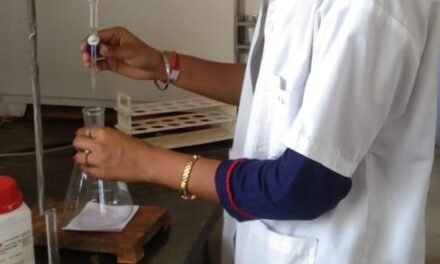Introduction
chemical oxygen demand (COD) is a measure of the amount of oxygen required to chemically break down organic matter in water. It’s a crucial parameter for assessing water quality evaluating waste water treatment efficiency and determining the environmental impact of organic pollutants.COD testing helps identify the level of organic insuring effective water management and pollution control
Objective:
- Identify the level of organic pollutants in water.
- Evaluating the effectiveness of wastewater treatment processes.
- water quality monitoring.
. Reagents :
. 1. ferrous Ammonium Sulphate (FAS).
2. Sulphuric Acid (H2SO4)
3. Distilled water
4. Potassium dichromate ( K2Cr2O7)
5. Ferroin indicator
.6. Silver sulphate (Agso4)
7. Stone
Preparation of stock:
1. 0.1 N FAS (ferrous Ammonium sulphate)
2. 0.25 N K2Cr2O7 (potassium dichromate)
O.1 FAS
. FAS provides 1 equivalent per mole ,so it’s equivalent
Weight = 392.14g/equiv.
. For 1 lit (1000 ml ) of 0.1 N Solution
. O.1 N* 392.14 g/equiv = 39.21g
. For 100 ML
. 39.21/10 = 3.921g
Procedure
१. Take 3.92 g of ferrous Ammonium sulphate accurately.
2. In a 100 ml beaker add 70-80 ml distiiled water.
3. Slowly add 2ml of concentrated H2SO4 the water.
4. Stir the solution gently.
5. Add the FAS into the acidifaied water.
6. Stir until fully dissolved.
7. Transfer the solution into a 100 ml valumetric flask.
8. Rinse the beaker with distilled water and that in the flask.
9. make up the volume to 100 ml with distilled water.
10. mix throuly.





